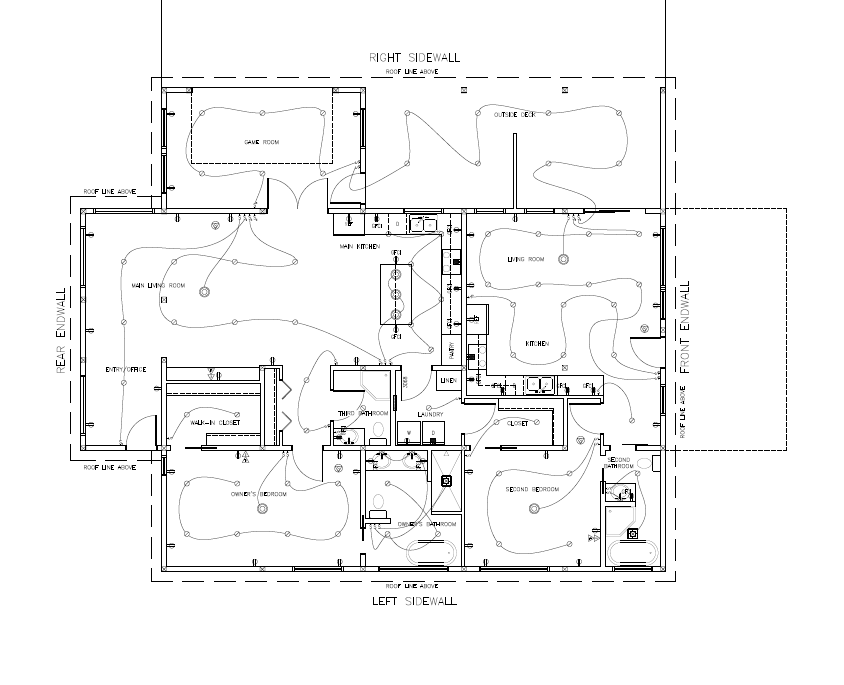Post-Frame Building Utilities
Reader MICKEY in LIVINGSTON writes: “How is the wiring and plumbing handled with a construction such as this?”
Utilities for a post-frame building is no different than for any other wood framed structure. During your new post-frame building’s planning phase, you will need to incorporate all necessary considerations for utilities to meet your new structure’s needs. Regardless of use, these may include plumbing and water, electricity, propane and HVAC as required.
Remember your needs may change over time (and often do). Later you may be grateful things like an apparent electrical outlet surplus were incorporated. Additionally, having plumbing fixtures situated at outset can save you money later on.

1. Local Codes and Requirements: During planning phase, you must review your needs with local Planning and Zoning entities. This will give you a better understanding of utilities easily available at your location.
2. Location: Remember, your costs will increase further structure is from closest available public utilitis. If possible, by preplanning you can forego costs of additional trenching or poles to access.
3. Lighting: What is your lighting plan? Will you be creating partitions needing individual lights? Or, are you using overhead lighting to illuminate more expansive, open space?
4. How many extra outlets will you need? Do outlets need different amperages for various tools or appliances?
5. Do you need to plan for an office, storage, tack room, or other temperature-controlled areas? If you choose to accommodate an office or temperature-controlled room, sufficient ducting will be required. Then ensure you plan for heating and air conditioning ductwork, insulation, and electrical outlets for comfort and convenience.
6. Will your HVAC be at ground level or mounted above to provide additional floor space? If above joists must be capable of handling any extra weight from the system.
7. Can you tap into an existing sewer system, or will you need to dig a septic tank? Review to ensure septic tank capacity will be sufficient for your needs as you grow.
8. Will you have a toilet? Remember plumbing for toilets or sinks should come up with an interior wall rather than an exterior wall in freezing climates. If your pipes must come directly from exterior, wrap them in at least 4 inches of insulation with an ample heat source to warm them.
9. Plan for electric meter placement. For aesthetic reasons, you may choose to keep it out of sight with your electrical panel nearby.






